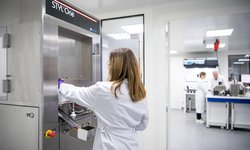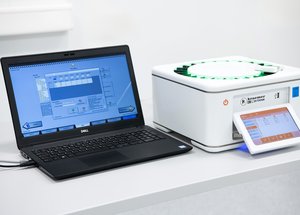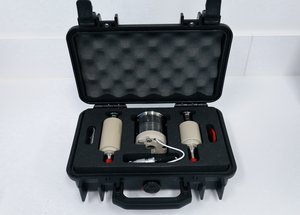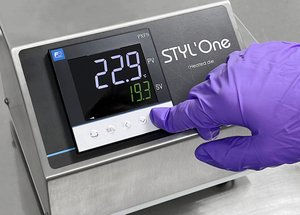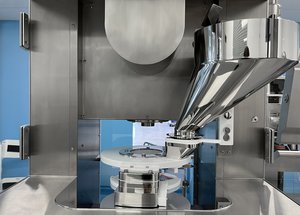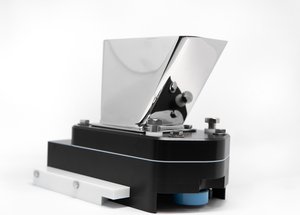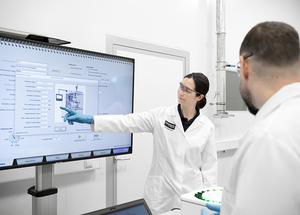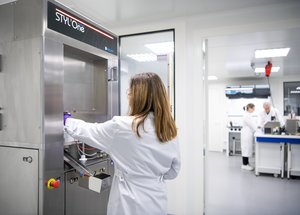Scientific papers
Roller compaction, a dry agglomeration process employing high stresses, binds powder particles together to form an agglomerate known as a ribbon. The prevailing bonding mechanism depends on the material's compressibility, deformation, and fragmentation characteristics. For amorphous materials, these properties vary significantly with water content and temperature. The bonding mechanisms within an agglomerate play a crucial role in determining its physical properties, including strength and porosity, which in turn impact characteristics like dissolution time vital to the industry. However, identifying the dominant bonding mechanism at the micro level in a specific agglomerate is challenging.
This work aimed to identify the primary particle bonding mechanism in an amorphous ribbon. The bonding mechanisms were assessed by monitoring the ribbon's physical characteristics using a novel ball milling method and SEM imaging. A thermal camera recorded an increase in powder temperature, directly correlated with the applied stress. This temperature rise led to sintering between particles, dependent on the material's water content, resulting in solid bonding as the dominant mechanism.
The gathered insights were used to create a map delineating the conditions necessary for specific dominant mechanisms and, consequently, physical characteristics. This mapping approach can be employed and refined by the industry as a predictive method for anticipating the physical attributes of an amorphous agglomerate before production.
Comments
No comments posted yet.
Add a comment


